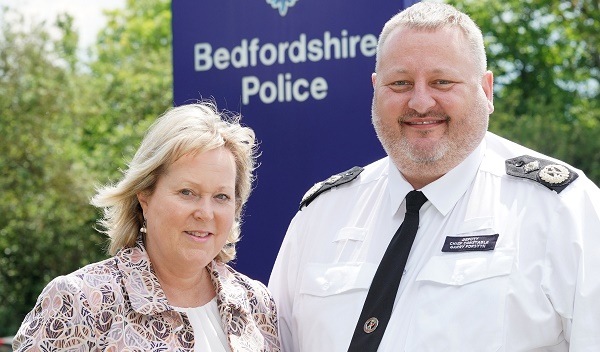Police playing catch-up in protecting older victims
Officers are failing to safeguard older victims of crime, according to the first specialist inspection of the service provided by police and prosecutors.
Too often, forces across England and Wales are failing their duty under the Care Act 2014, which for the first time placed a responsibility on the police service to ensure adults have the care and support needed and are protected from neglect or risk of exploitation.
The assessment by Her Majesty’s Inspectorate of Constabulary and Fire and Rescue Services (HMICFRS) and Her Majesty’s Crown Prosecution Service Inspectorate, commissioned by former Home Secretary Amber Rudd, found a gulf between adult and children safeguarding.
HM Inspector Wendy Williams told Police Professional that policing is playing catch-up in its responsibilities under the Act, compared to the “coherent and cohesive” response to children’s safeguarding.
Of the 192 cases the inspectorates looked at in detail, victim care was found to be not good enough in 101, and the Victims’ Code had been complied with on only 97 occasions.
In just half of cases (77 out of 153) were referrals for safeguarding made to local authorities and commissioning groups when they should have been.
Ms Williams said the reason officers were not referring victims was not because of a lack of availability of services but because of their lack of awareness of the need to do so.
“There is a case for greater awareness, better training and clearer understanding of the responsibilities that police officers have under the Care Act,” she added.
In the inspectorates’ report The Poor Relation, published on Wednesday (July 17), said the initial response from officers and staff was found to be “very positive, sympathetic and sensitive”, but thereafter the service provided to older victims falls away because the quality of investigations was not as good as it should have been.
For example, officers do not consider taking a video statement at the time of initial reporting, rather than a written one months later when an older victim may have forgotten many of the facts.
In three quarters of cases, the perpetrators are known to the victim, such as a carer or relative, yet special measures, such as the victim being able to give evidence via video link so they do not have to face the perpetrator in court, are not considered as often as they should.
When a 70-year-old with learning difficulties asked a neighbour’s friend for help with her finances, and later found that substantial amounts of money had been taken from her accounts, the victim was not visited until 11 days after the report was made despite telling the police that she had been taken advantage of because she was vulnerable and lonely.
Neither the investigating officer nor supervisor considered the use of a registered intermediary and no statement was ever taken and no consideration given to better ways for the victim to give her best evidence. The suspect was invited for an interview two months later and there was no record that the victim had been referred to support agencies or of what safeguarding arrangements had been put in place. The case was closed because the police concluded there was insufficient evidence against the suspect.
Inspectors also criticised the lack of definition for an older person, while the Crown Prosecution Service (CPS) says anyone over 60 is ‘older’, Age Concern categorises people over 50 as ‘elderly’, and each force examined had its own definition.
With an increasingly aging population – 12.2 million people were over 65 in 2017 – not all should be classed as vulnerable, but their circumstances may make them vulnerable, says Ms Williams.
By 2066, a quarter of the population will be over 65 and their complex needs will pose a massive challenge for policing, the criminal justice system and partners.
“The police service is failing to assess the vulnerability of older victims of crime,” Ms Williams said.
“They are then not referred to victim support services and the investigations can suffer as evidence may not be gathered effectively, special measures are not implemented when needed and registered intermediaries are not appointed to help the victim give their best evidence.
“These are the sorts of considerations that should be taking place day-in, day-out but were doing so inconsistently.”
Ms Williams said she hoped the police response to the report would not simply be an introduction of bureaucracy and tick-box exercise to record vulnerability but would lead to a change in the way that crimes against older people are investigated.
“It is essential that officers record elements of vulnerability and risk that are relevant to how the investigation is to be carried out, and an individual is protected and safeguarded.”
Examples of good practice across the service are highlighted, such as a triage process in North Wales that identifies elements of risk and whether specialist investigators are needed.
“This could be seen as bureaucratic but in practice we found this was really effective,” said Ms Williams.
“Taking a bit more time to record decisions and assessments and to direct investigative activity leads to building stronger cases and better outcomes. You are actually saving rather than creating more bureaucracy.”
Other examples of good practice found in forces included a team of vetted volunteers called Scambusters, who go into communities in Manchester to provide crime prevention advice.
Dorset Police has a specialist fraud team that works alongside Action Fraud. And a Victim Support Hub in Cambridgeshire sees police staff working alongside victims’ services to provide a more coordinated approach.
However, because there is not a consistent approach, and crimes against older people cross national policing portfolios, good practice is disparate, Ms Williams said.
“We are calling for a more coherent approach to dealing with crimes against older people.
“By building strong cases and making sure victims’ needs are paramount and are addressed, you can potentially create a virtuous circle and reduce the amount of offending against older people.”
The National Police Chiefs’ Council (NPCC) welcomed the report and said it is important that, as the population ages, the police are able to deal with crimes against older people in an effective way and support victims appropriately.
NPCC lead for adults at risk, Deputy Chief Constable Ian Pilling, said: “As with any report of this nature, there is good practice identified and areas where we need to do better. We will work with our partners to achieve the recommendations. In particular we are considering enhancing training and guidance provided to officers, as well as increasing the profile of crimes against older people.
“However, our resource constraints mean that we cannot deal with every victim in the way they would like and indeed in the way we in policing would like to be able to. This will require us to prioritise our response to crimes, based on a number of factors, including vulnerability and threat harm and risk.”
Deputy Chief Constable Janette McCormick, director for policing standards at the College of Policing, said: “Today’s report highlights the importance of identifying vulnerable adults at the early stages of investigations, to ensure victims are protected and have the right support throughout any court process.
“It is encouraging that areas of good work by forces were identified by the inspectors and the improvements in training and the response of officers and staff who come into contact with vulnerable adults were recognised.
“The College of Policing’s updated vulnerability training, which focuses on age as a factor which can impact a person’s vulnerability and helps police identify and respond to specific risks and issues, is available to all forces across England and Wales and has already been delivered to more than 9,500 officers.
“It is concerning the inspectors found the service to some elderly people fell below expected standards and we will be working with agencies, including the NPCC and Crown Prosecution Service (CPS), to examine the report and its recommendations in detail and continue to support policing to improve the protection of vulnerable people, whatever their age.”
Recommendations made in the report include:
- Within six months, the NPCC lead for adults at risk and the CPS should agree a joint and simple definition of what constitutes an older victim and take a coordinated approach to understand and respond to the problem.
- Within six months, the NPCC lead for case file quality should work with the College of Policing to produce guidance for officers, which should be given to chief constables.
- Within six months, the NPCC leads for adults at risk, age-related matters and the vulnerable people portfolio should develop a strategy for how the police service should respond to the problems faced by older people and agree who should be responsible for it.
- Within six months, the NPCC lead for crime investigation should work with other interested parties to review current allocation processes and recommend systems that more easily help forces to allocate an appropriate investigative response.
- Within three months, the NPCC lead for adults at risk should remind chief constables that it is important that officers consider whether a registered intermediary can help victims to give better evidence.
- Within six months, the NPCC lead for victims and witnesses should establish good ways for police forces to conduct a victim needs assessment. This should include whether the assessment should be completed when officers first meet victims and witnesses, and whether there are benefits in providing the assessment to the CPS and other appropriate organisations.
- As a matter of urgency, the College of Policing should develop guidance and training for officers involved in adult safeguarding arrangements.
- Within six months, chief constables should make sure that victim needs assessments are always completed.
- Within three months, chief constables should conduct analysis of the current and future demand for adult safeguarding, including the gap in knowledge that may exist from those cases where referrals aren’t made because of errors or omissions. This analysis should be incorporated into force management statements.
- Within six months, chief constables should work with police and crime commissioners and their mayoral equivalents, and other relevant organisations, to review whether victim support services can be provided in a better way.
- Within three months, chief constables should ensure that adult safeguarding referrals are always made when appropriate, with effective processes in place to make sure this happens. The NPCC lead for adults at risk should advise chief constables as to how this is best achieved.
- Within six months, the CPS should review its guidance about special measures. The CPS should also work with the College of Policing and the NPCC, so that special measures meetings are offered to victims and witnesses when appropriate.
- Within three months, the CPS should remind prosecutors to record that a restraining order has been considered in all appropriate cases.







